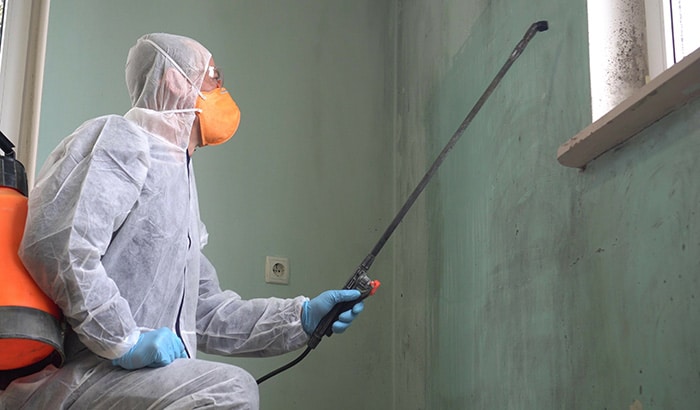For homeowners and business owners, mold is the stuff nightmares are made of, but luckily, there’s mold remediation. It can help restore your property to its original, mold-free state.
If you’re wondering what the process for mold remediation is, here’s everything you need to know.
Mold Removal vs. Mold Remediation
A quick online search about how to get rid of mold could easily leave you feeling confused. Mold removal. Mold remediation. What’s the difference? Many companies advertise mold removal, but this implies that they will completely remove any and all mold spores from your property. This notion is false, since spores naturally exist nearly everywhere.
Mold remediation is the proper way to handle mold damage restoration. It focuses not on removing mold altogether, but rather on returning the mold levels in your home or business back to normal, natural, and safe levels.
The Mold Remediation Process
Mold can present serious health problems like asthma and other respiratory illnesses, as well as damage your property. It’s important to seek professional help to begin the mold remediation process as soon as the mold is discovered. Once you call a professional, they will take the following steps to remediate the mold in your home or business:
1. Inspect the Property and Assess Damage –
Mold restoration teams know that time is of the essence when treating mold, so they will typically respond to your call quickly. They’ll come in and do a detailed inspection and document the damage with notes and pictures. Then they’ll make a plan for treatment. Depending on the extent of the damage, homeowners may need to find a place to stay while the mold is being treated.
2. Contain the Mold–
Remediation begins with containing the mold spread. Mold spreads through spores in the air, so containment often involves hanging plastic sheets or “containment chambers” to isolate the area where the mold is present so it can be treated without spreading. Within the contained area, professionals also use air filtration and proper safety equipment.
3. Remove Mold-Infested Materials –
It’s impossible to remediate the mold while leaving mold-infested materials in-place. Carpet, soft furniture, and sometimes drywall needs to be removed from the infected area.
4. Dehumidify and Disinfect –
Mold thrives in moist areas, so removing the moisture from the treatment area is essential. A dehumidifier will be placed in the containment zone and will run until the air is completely dry. Then disinfecting the surfaces begins. Disinfecting is often done with hydrogen peroxide, but other cleaners can be used. The disinfectant is applied to the surfaces and scrubbed thoroughly.
5. Replace Cleaned Materials – Once everything is clean and dry, a visibility test will be done to see if any mold spots are still visible. If the area passes the test, the items that have been removed (and thoroughly cleaned) can be replaced and remediation is complete.
Summit Restoration is Here
At Summit Restoration, we know that mold remediation is important to get your life back on track after a water event has occurred. That’s why we’re here to respond to your emergency 24/7. We specialize in mold and water damage repair and restoration, fire restoration, and more. We serve Utah clients throughout Utah County, including Lehi, American Fork, Orem, and Provo. Contact us today!






